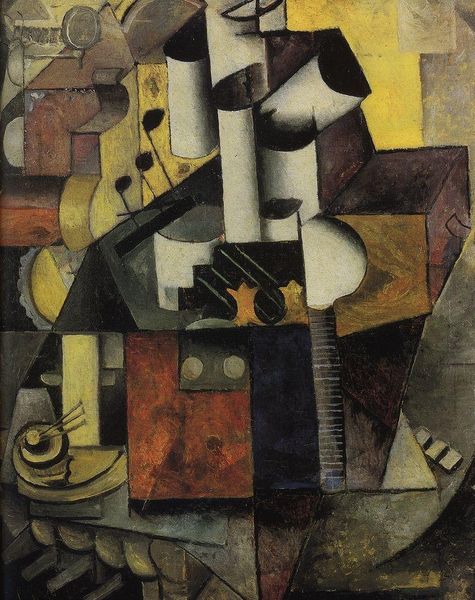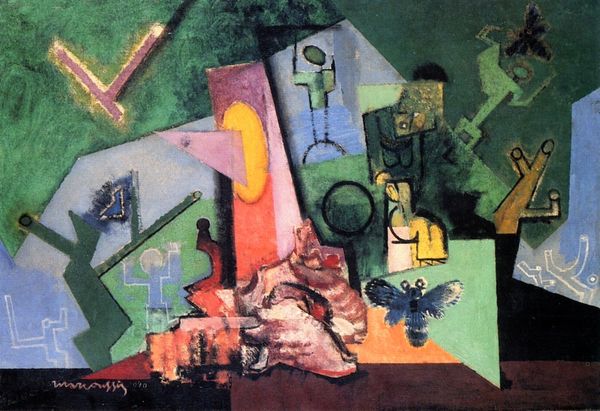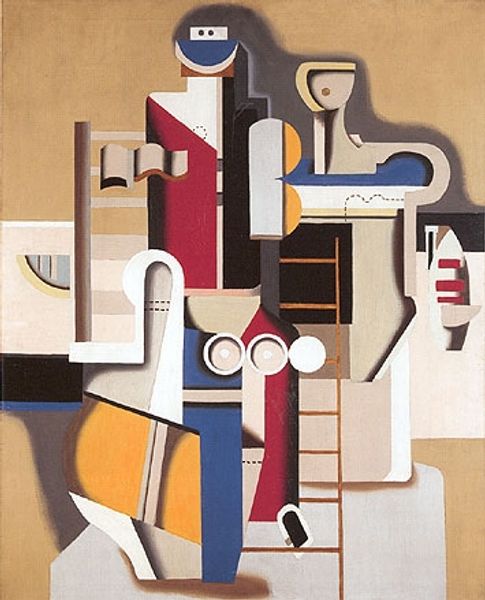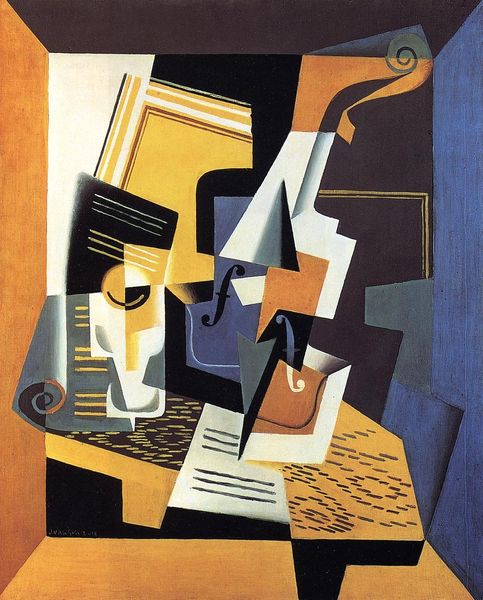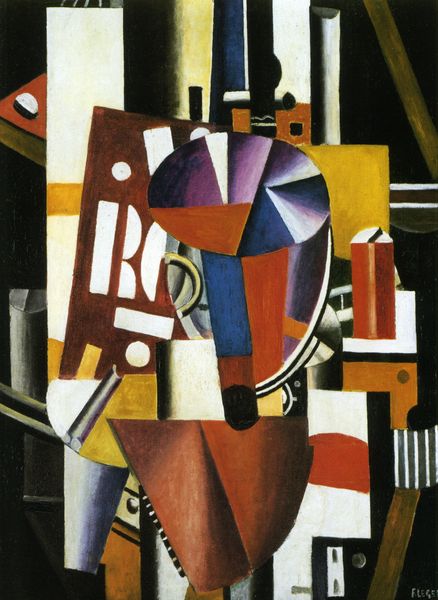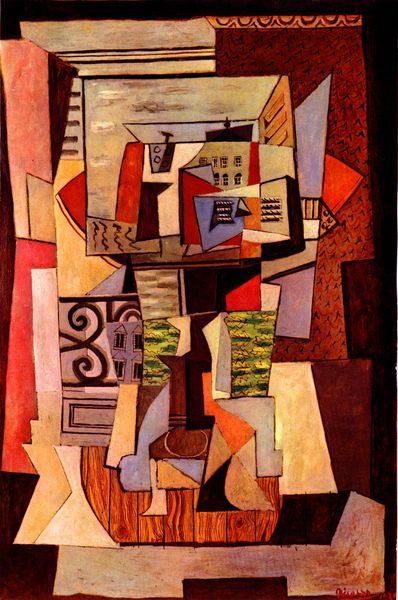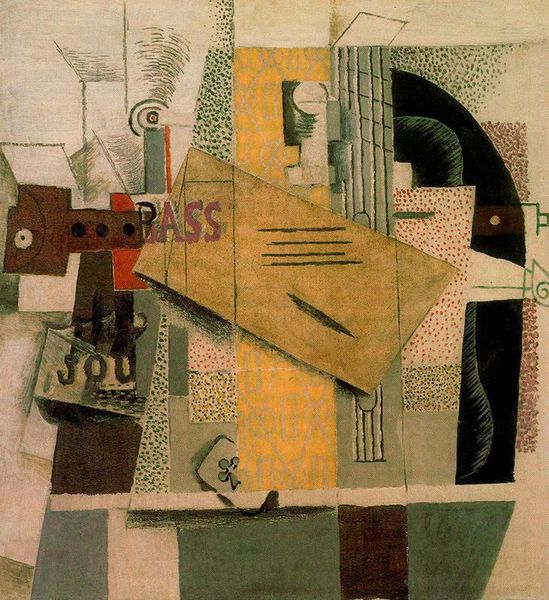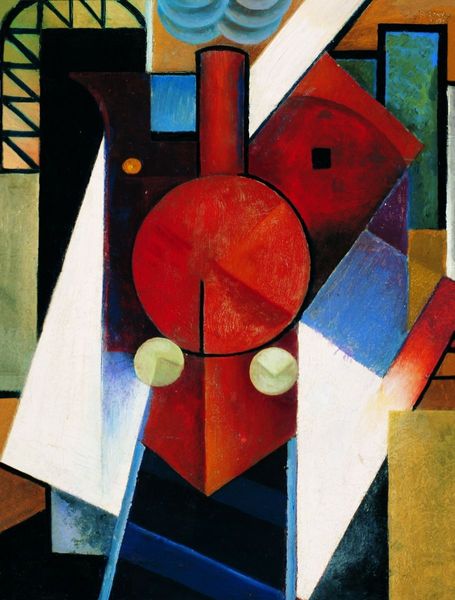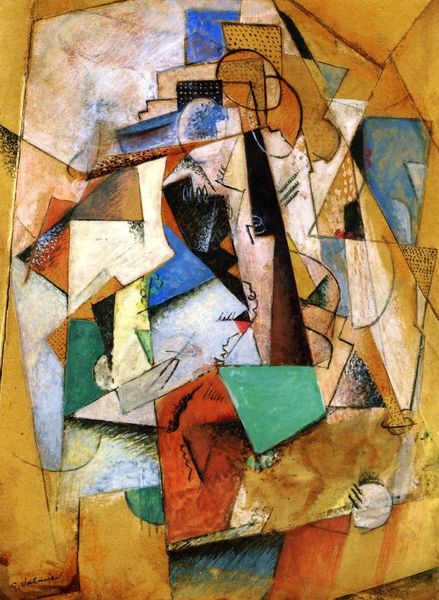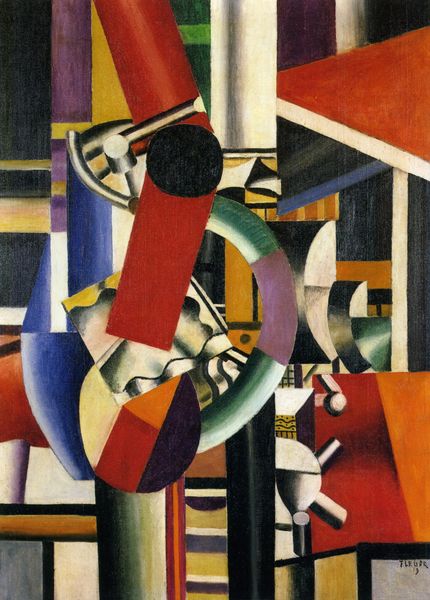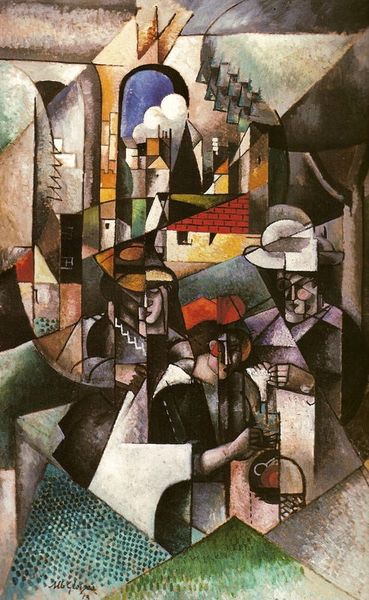
mixed-media, collage
#
cubism
#
mixed-media
#
collage
#
appropriation
#
geometric
#
russian-avant-garde
#
cityscape
#
futurism
Dimensions: 71 x 64 cm
Copyright: Public domain
Editor: Here we have Kazimir Malevich's "Lady at the Poster Column" from 1914, a mixed-media collage that strikes me as both chaotic and meticulously constructed. There’s a sense of fragmented reality. How do you interpret this work, especially given the title? Curator: I see layers upon layers of cultural memory being constructed. The "poster column" itself is a symbol of urban life, a visual cacophony of advertising and public messaging. Malevich isn't just representing a woman encountering this column; he's capturing the experience of encountering it. Editor: The use of collage feels very deliberate in conveying that experience. Curator: Precisely. The pasted fragments—snippets of text, geometric shapes—act as symbols representing the bombardment of information characteristic of modern life. These symbols act on our subconscious, don't they? And the lady... where is she? What does she represent, in this urban iconography? Editor: Maybe she's us, the viewer, trying to make sense of all these fractured images and symbols. Curator: An intriguing proposition! Malevich, deeply embedded in the Russian avant-garde, often used art to explore the psychological impact of modernity. Perhaps the 'lady' is a cipher for a collective experience, a way for us to engage with a changing cultural landscape, one fragmented message at a time. Editor: So it is a portrait of the collective unconsciousness, shaped by advertisements and urbanization? Curator: I see continuity through broken images. The visual is speaking to cultural memory of our modern cities. Editor: That gives me a whole new perspective on collage and its capabilities. It’s not just about assembling materials; it’s about assembling meaning and memories. Curator: Indeed. The materials trigger new connections. What begins as chaotic, could turn into clarity, reflecting the journey of cultural assimilation.
Comments
No comments
Be the first to comment and join the conversation on the ultimate creative platform.
